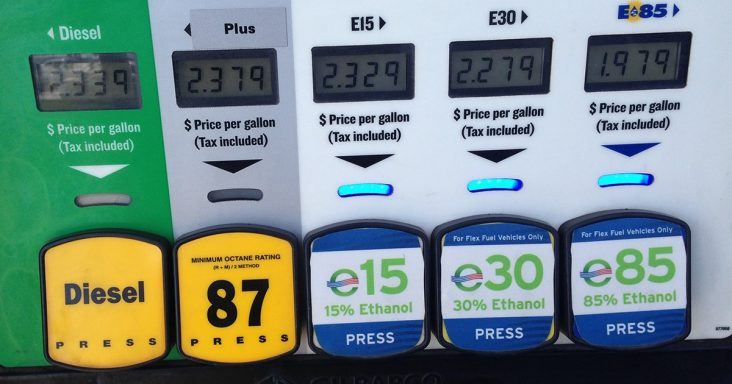Fuel ethanol exports declined, export destinations rose in 2019
by May 7, 2020 11:29 pm 626 views

U.S. exports of fuel ethanol fell 14% to 96,000 barrels per day in 2019, and the drop was the first annual decline in the exports since 2015, according to the U.S. Energy Information Administration (EIA).
Despite the decline, the exports were the second-highest level on record. The United States exported more fuel ethanol than it imported in 2019 and was a net exporter for the 10th consecutive year.
The number of export destinations rose by five to 39 in 2019, from 2018. Almost half of all U.S. ethanol exports went to Brazil and Canada, even as these countries decreased their ethanol imports from the United States by 34% and 5%, respectively.
Brazil decreased the imports for the first year since 2015 but still accounted for nearly one-quarter of U.S. ethanol exports, receiving 22,000 barrels per day. Brazil uses a large portion of ethanol to meet its fuel ethanol blending requirements, which is set at 27%, and demand for hydrous ethanol that competes with traditional gasoline blends. The country produces its ethanol from sugarcane and is harvested between May and October. Its imports of U.S. ethanol usually reach a peak between harvest seasons.
The United States also imports Brazilian fuel ethanol, especially during the sugarcane harvest season. In 2019, U.S. imports of sugarcane ethanol rose to 13,000 barrels per day, from 9,000 barrels per day in 2018, and all of the imports came from Brazil. The imports went to the West Coast region, likely to meet increasing standards for California’s Low Carbon Fuel Standard and its favorable carbon intensity scores for Brazilian sugarcane ethanol as opposed to domestic corn ethanol.
In early 2018, price discounts of U.S. ethanol in comparison to Brazil’s ethanol led to monthly record-high levels of U.S. fuel ethanol exports to Brazil. In early 2019, some of the price advantages remained but were at a lower level compared to 2018. U.S. exports to Brazil were nearly 3 million barrels in the first three months of 2019, or 37,000 barrels per day, but this was 40% lower than the record level set in the first quarter of 2018.
U.S. ethanol exports remained higher as Brazil extended a 20% tariff on U.S. ethanol for volumes higher than 1 million barrels through September 2019. The tariff was increased in September to allow for a limit of 750 million liters, or about 5 million barrels, per year through 2020.
Canada was the second-largest destination for U.S. ethanol, importing nearly 22,000 barrels per day in 2019. The volumes were mostly unchanged from levels over the past few years. Canada uses the ethanol to meet regional ethanol requirements for gasoline, which range between 5% and 8.5%.
In 2019, the third-largest destination for U.S. ethanol was again India at 12,000 barrels per day, followed by South Korea and Colombia. The remaining 34 countries received about 30,000 barrels per day of U.S. ethanol exports.
